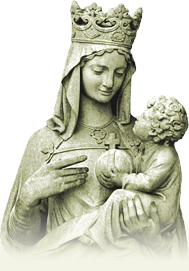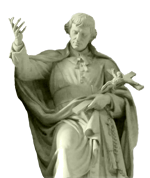Religion-Philosophy-History
Jean Guitton and the Modernism on II Vatican Council: Report from Brescia
Paul VI Institute in Brescia, Italy
We transcribe (*) below the report from Istituto Paolo VI di Brescia [
Reply and “Report” from “Istituto Paolo VI di Brescia”:
-----
From: "Lino Albertelli"
To: Marcelo Fedeli
Sent: Monday, December 02, 2002 11:14 AM
Subject: answer
Brescia, December 3, 2002
Dear Mr. MARCELO FEDELI
S. Paulo (Brazil)
We wish to apologize for the delay in replying your
We
Distinguished regards,
(Dr. Renato Papetti)
ATTACHMENT (Version in English – ipsis literis – of the attachment sent by Istituto Paolo VI di Brescia)
When speaking of modernism, it is good to make a substantial distinction between the philosophical and theological-biblical theory, which we will discourse about, and the concept of modernity seen as a social-cultural fact, which is often misinterpreted as the first theory.
1. Philosophical and theological-biblical theory
A convenient reconstruction of the “modernism” should be carried out in several periods, not excluding the crisis brought about by aristotelism in the 12th century, up to Loisy’s and Buonaiuti’s theories.
The term “modernism” was coined by St. Pius X’s very document “Pascendi”, whose title is “De modernistarum Doctrinis”.
The thesis there condemned were Loisy’s, expressed both in the “petit livre rouge”, namely, “The gospel and the Church”, of 1902, and in the second “petit livre rouge”. Already on January 17th , 1903, the archbishop of Paris, cardinal Richard, had reproached Loisy’s work. The “modernist” theories that worried the Mastership were precisely those related to the field of biblical interpretation.
Indeed, Loisy makes his the thesis of Harnach about the historical-critic method in the approach of the Scripture, and even of the “Depositum Fidei” with all that it achieves.
Unlike is P.G. Lagrange’s work, who, contemporary to Loisy, also approaches the Scripture with scientific method, but he considers the Bible as anthrop-divine synergy.
He will found in Paris the “Revue Biblique”, to which Loisy will oppose, with the publication of “L’Enseignement biblique”, which will not last too long.
Pope Leo XIII (November 16, 1893) promulgates the document “Provvidentissimus Deus”, where P. Lagrange sees the approbation of his exegete method, which joins faith and critic, where divine inspiration and knowledge of the sacred author do not exclude one another: “God teaches in ineffable way only what the sacred author teaches, this is the traditional principle of exegesis. Next we have the principle of good sense; the sacred author teaches only what he wants to teach. We have the principle of literary critic: the author expresses himself within the genre he chose. There is nothing left for us to do but to confront him with a last principle of logic not less elementary: the term does not contain neither the truth nor the error, for one and the other arise when one makes a judgment, that is, a categorical assertion or denial. And there is no categorical judgment but when the author wants to pronounce it” [1]
With this criterion, P. Lagrange, considering on one hand the principle of divine inspiration, and on the other, the principle of the instrumentality of the author, was convict of being able to avoid the injurious conflict between faith and science.
Pope Leo XIII, precisely by this method of approaching the Scripture, will institute the Pontifical Biblical Commission, including P. Lagrange as well (1902).
P. Lagrange, by his turn, will be placed under suspicion in 1912 by St. Pius X, with a letter from the Consistorial Congregation because of his position about the mosaic origin of the Pentateuch, by him expressed and kept in the IV Scientific Congress of Catholics at Fribourg, on August, 1897.
2. «Modernism» in the II Vatican Council
Sure the II Vatican Council has taken care, like it could not make it, of the serious and great problems of humanity that impoverish and threaten the straight conscience which allows people to recognize good from evil, and to act consequently, according to the dictates of faith and of the dignity of man, image and likeness of God, by identity and vocation.
This is the attention that we find in the pastoral constitution Gaudium et Spes of exquisitely evangelic style and that is often accused of modernism. But, as we have introduced the modernism stigmatized by the Pascendi, the II Vatican Council in the dogmatic constitution Dei Verbum sits on a totally different position, so much to offer to the Word of God the primacy of the Church.
There is evident ignorance and bad intention in those who see connivance between the doctrine of the Vatican II relative to Revelation and the thesis on which the modernism is based, that is the historical-critic theory.
We hurry therefore to present our theological reflection on the renewed concept of Revelation, introduced by the Dei Verbum, which goes clearly in the opposite direction of the modernist conception.
The renewed concept of Revelation
In order to comprehend the renewed concept of Revelation of the Vatican II, it is necessary to briefly confront the perspectives of Vatican I and Vatican II, from the historical and theological point of view.
Under the historical-cultural profile, it is known that the perspective and context of the two Councils are radically different. The historical-cultural context in which the formulation of the doctrine of Revelation in the Vatican I gushes is determined by a deep fracture between Christian and modern thought. The problematic on Revelation and on the relationship between faith and reason is strongly conditioned by traditionalist and rationalist tendencies, against which the doctrine of Council is placed. The final intention is the sentence of the errors of the time and the climate is determined by the fact that the Church felt besieged by its adversaries. This controversial situation also influenced the official theology in the following years, which made an effort to defend the truth of faith from the errors, accumulating, however, at the same time, a large cultural delay, because of the hardening and crystallization of theological formulas.
The historical-cultural context of the Vatican II is certainly different: the Church does not intend to proclaim specific dogmas nor to pronounce against heretic positions, but proposes to begin a dialogue with the modern world. The Church, getting out to the uncovered, wants to rethink the patrimony of faith, globally considered, and to introduce it in an accessible way to contemporary civilization as to intervene effectively the existential condition of the man of today.
The Vatican II is born in a period of theological Reflection and of a calmer and, above all, more creative ecclesial rethinking and proposes not much to defend, but to expose the doctrine of the Church, showing its organicity, existential importance and up-to-date pastoral.
As for the doctrinal profile, one can summarize the conciliate thinking concerning the concept of Revelation in the following items:
a) The way that the notion tagged along in the conscience of the Church is usually measured and concisely expressed by saying that there has been a passage from an intellectualistic conception to a personalistic historic-salvific conception of Revelation.
The intellectualistic conception understands Revelation as the communication of truths from God to the human intellect, supported by freedom and lightened up by grace.
The historical-salvific conception sees Revelation as a self-manifestation of God Himself in history and in man’s history, through the mission of Jesus and of the Spirit. [2]
There is no opposition, evidently, between these two conceptions, since the second does not exclude, but integrates the first. The self-revelation of God, indeed, also implies in a communication of truths at the intellectual level, recognizable from the poetic point of view.
Nevertheless, there is also diversity between these two perspectives. The second overcomes the first, for the terms of the event of Revelation are not anymore the truths on one side and the human intellect on the other, but are, on one side, God freely present in Jesus’ history and in the history of the Spirit given by Jesus, and on the other side, the man who is called to live his history freely as Spirit’s history, which “makes memory” of the history and the eschatological event of Christ.
b) A second and fundamental theological note on the renewed concept of Revelation is the centrality granted to the mystery of Christ. Jesus Christ is the fullness and the fulfilling of God’s Revelation. Consequently, an indubitably personalistical perspective of Revelation is asserted. [3]
c) Besides, the christcentrism of Revelation allows to better comprehend the unity and distinction between creation and Revelation. The unity is given by the fact that creation finds its truth in the Incarnated Verb. Christ is therefore the full sense of creation. The distinction is described by means of an overcoming or a qualitative surplus of the innovation of the event Christ regarding the horizon of the universal history [4]. The consequence of this formulation is that a theological reflection over the sense of history must start from the event-Christ, that becomes the hermeneutic principle of the universal history.
d) Finally, the sacramental dimension of Revelation is asserted [5]. God’s Revelation happens by means of facts and words (Facta et Verba). This, described as an initiative from God, which aims at His very person, came through some interventions of God Himself oriented to an only end, which is the gift of salvation. This order events and interventions is called “economy” (historic-salvific economy). The sacramental dimension gushes at this point, since the full meaning of the gestures ensues merely through words, that is, from Locutio Dei, which, by its turn, is in Christ Jesus a concrete historical happening.
e) After discoursing over the Revelation as an action of God, the object of Revelation is stressed. This is God’s Word, through which we are lightened about God’s truth and about man’s salvation. And, since God’s Word was made flesh, this truth is not exhausted in the intellectual order, but demands that in Christ the communion of life with the Father, the Son and the Holy Spirit be fulfilled. The object of Revelation is, therefore, a true interpersonal communion between the man and the Most Holy Trinity.
Concluding this brief presentation of the theological characters of the theme Revelation, one easily comprehends that the conciliate perspective shows an unavoidable interest by antropology and by the history in which the human existence is accomplished.
Consequently, the new concept of Revelation unblocks the indifference of the theology for the various sights of culture and communicates an interest that is as much passionate, almost anxious, as what has been inert the previous indifference by way of the manualistic and neo-scholatic theology.
It is about a revolution of the theological method, but not, for sure, towards the criteria of modernism.
[1]. M.J. Lagrange. L'inspiration et les exigences de la critique, in RB.5 (1896) p. 507.
[2]. In the dogmatic Constitution Dei Filius from Vatican I, the aim of Revelation is the participation in the divine knowledge, and consequently the priority is given to wisdom: «Placuisse eius sapientiae et bonitati...revelare» (DS 3004). In the Dei Verbum, on the contrary, it is asserted: «Placuit Deo in sua bonitate et sapientia seipsum revelare» (DV 2). It is not about a contraposition, but diverse accentuations in the way of comprehending the process and the dynamics of Revelation.
[3]. In the Constitution Dei Filius it is observed an almost tangential presence of the figure of Christ in relation to the theme Revelation. It is present, but is substantially seen in an “instrumental” work regarding the action of God which is that of manifesting the set of divine and supernatural truths. On the other hand, in the Dei Verbum the role of Incarnation acquires a decisive dimension in order to illuminate the sense of God’s revelation.
[4]. «The deepest truth about God and the salvation of man shines out for our sake in Christ, who is both the mediator and the fullness of all Revelation» (DV 2). And yet «God, who through the Word creates all things and keeps them in existence, gives men an enduring witness to Himself in created realities (Cfr. Rom. 1:19-20). Planning to make known the way of heavenly salvation, He went further (insuper) and from the start manifested Himself to our first parents.» (DV 3).
[5]. Cfr. DV 2.
(*) NT. Translation from the original in Italian: http://www.montfort.org.br/index.php?secao=cadernos&subsecao=religiao&artigo=vaticano2a&lang=ita
Para citar este texto:
"Jean Guitton and the Modernism on II Vatican Council: Report from Brescia"
MONTFORT Associação Cultural
http://www.montfort.org.br/eng/cadernos/religiao/vaticano2a/
Online, 02/07/2025 às 00:33:42h








